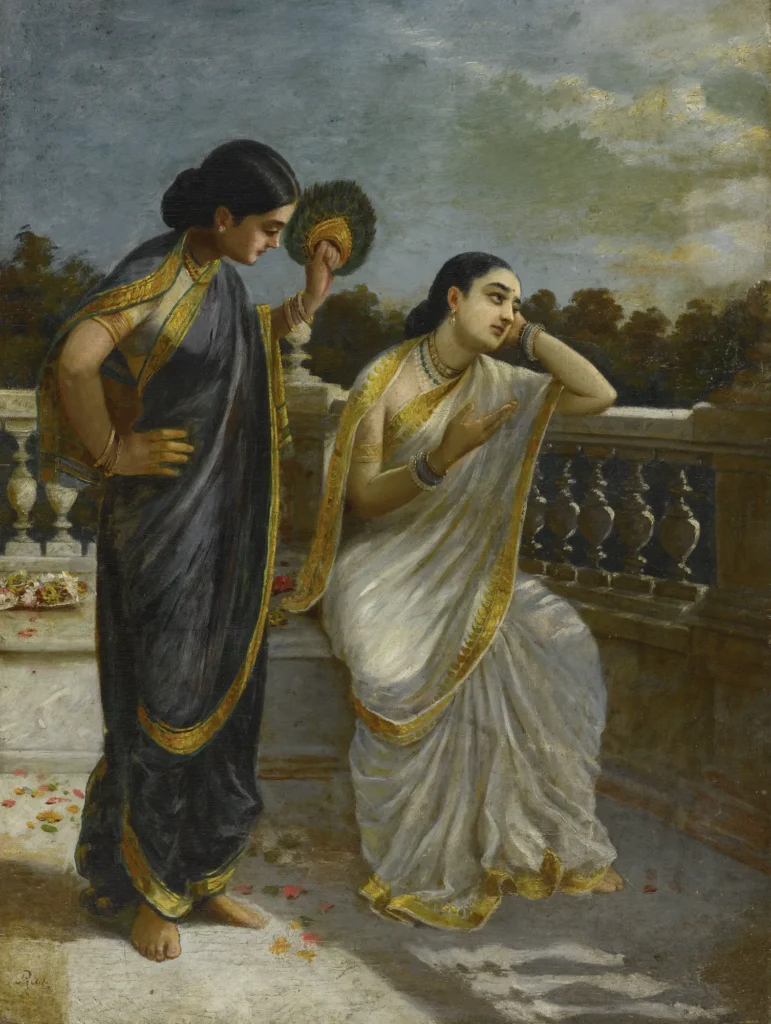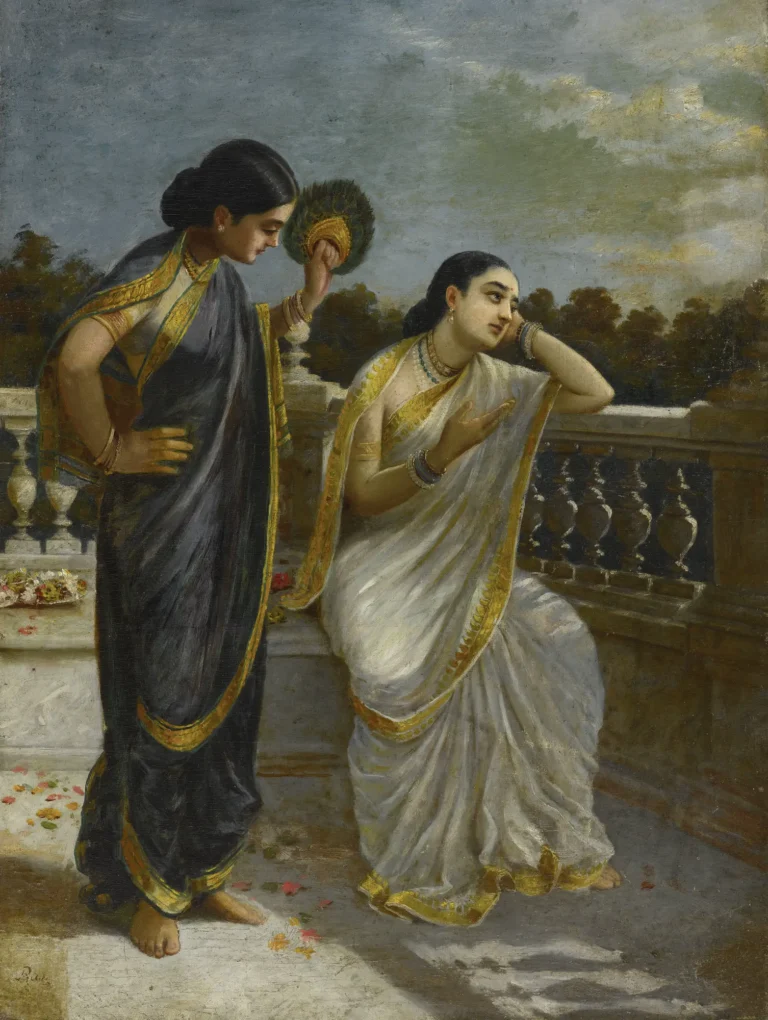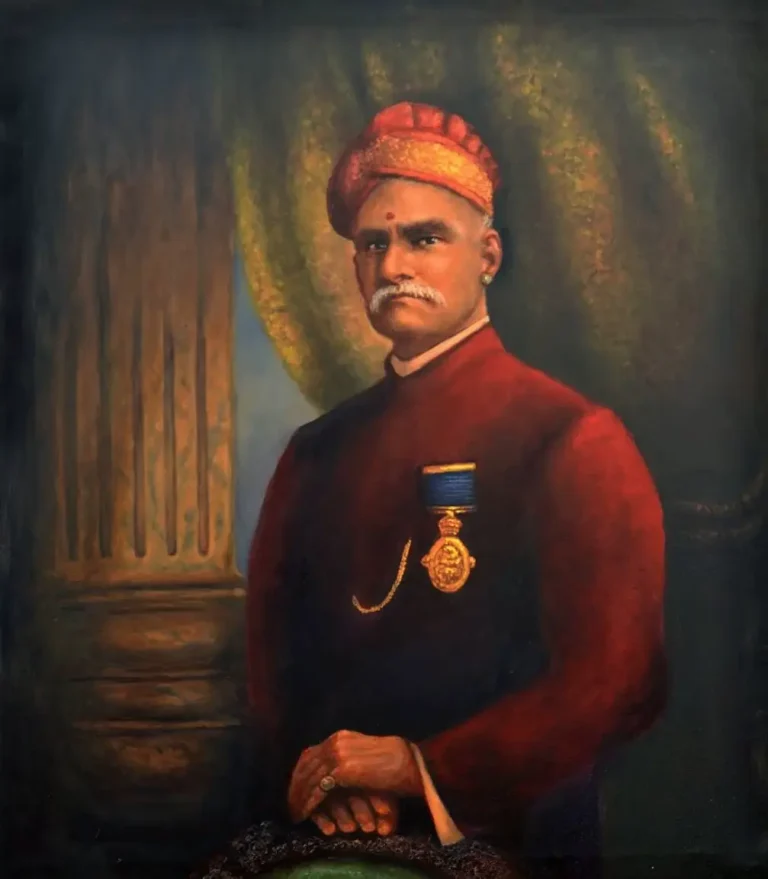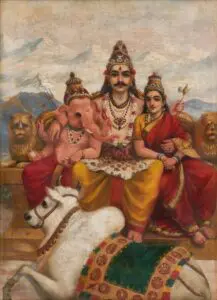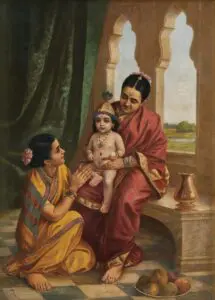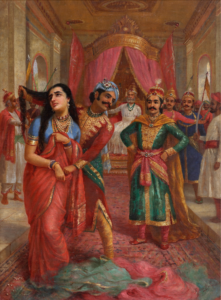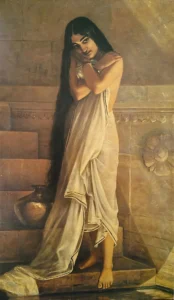Ladies In The Moonlight
This exquisite painting by Raja Ravi Varma captures an intimate moment between two women, one in quiet contemplation and the other offering silent comfort. The elegant saris, subtle expressions, and serene terrace setting evoke themes of friendship, longing, and empathy. With its delicate details and emotional depth, the artwork beautifully showcases the timeless grace of Indian femininity.
Late 19th Century (1889 - 1890)
About the Artwork
This painting is a masterpiece by Raja Ravi Varma, one of the most celebrated artists of India. It captures a poignant scene with two women, a hallmark of Ravi Varma’s ability to portray human emotions with grace and elegance. It depicts an intimate moment between two women on a terrace, surrounded by a natural setting in the moonlight. The central figure, draped in an elegant white sari with golden borders, rests her head on her hand with a melancholic expression, gazing into the distance. Her posture, along with her wistful expression, conveys a deep sense of longing or contemplation.
The second figure, dressed in a contrasting dark sari with golden borders, stands beside her holding a traditional peacock-feather fan, gently attending to her companion. Her posture, with one hand on her hip and the other holding the fan, suggests a sense of empathy or quiet understanding, as if she is trying to comfort the seated woman.
The setting of the artwork includes a stone balustrade adorned with floral decorations, and scattered petals on the terrace floor, enhancing the emotional undertone of the scene. The muted background with trees and the soft, cloudy sky adds to the mood of nostalgia or introspection.
Background and Artistic Significance
Raja Ravi Varma’s captivating depictions of women in moonlit settings illustrate his deep connection with Indian mythology and beauty. His paintings such as Radha in the moonlight, Lady in the moonlight and this one are treasures in the art world.
Did You Know
Liked what you see? Add it to your collection.
Enjoyed reading? Share it.
... continued
Cultural and Historical Context:
During Ravi Varma’s time, paintings like this were revolutionary because they depicted Indian women not as idealized symbols of mythology but as individuals with emotional depth. This shift brought Indian art closer to realism and allowed it to resonate with the everyday lives of people.
The contrast between the white and dark saris of the two women may symbolize the duality of emotions—light and hope versus shadow and sorrow. The peacock-feather fan and the floral decorations hint at traditional Indian aesthetics, grounding the artwork firmly in its cultural roots.
Legacy of the Painting:
This work showcases Ravi Varma’s unique ability to humanize his subjects and evoke a strong emotional response from the viewer. Paintings like these continue to inspire admiration for their storytelling, technical brilliance, and deep cultural resonance.
This piece is a testament to Ravi Varma’s unparalleled skill in capturing moments of quiet introspection, turning everyday scenes into profound works of art.




